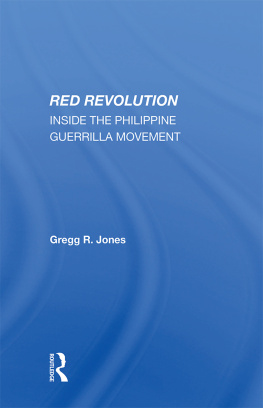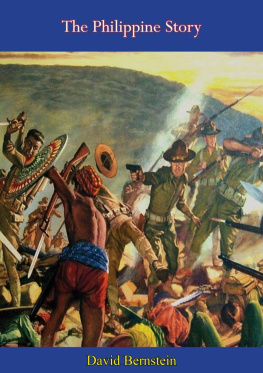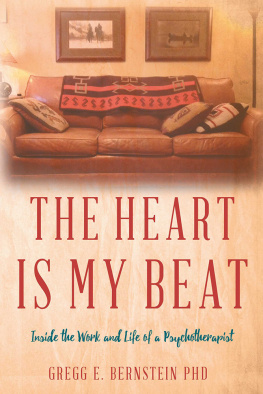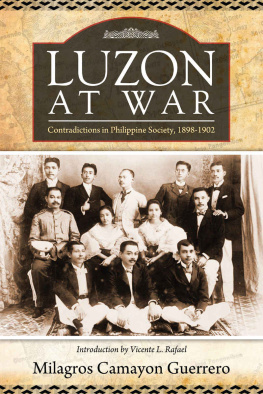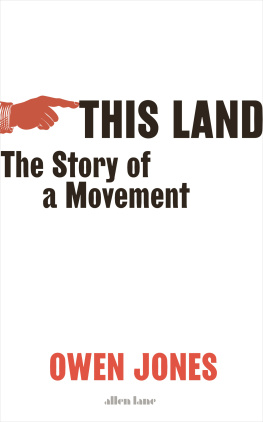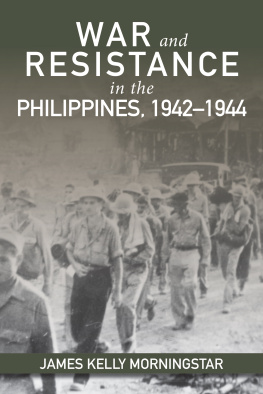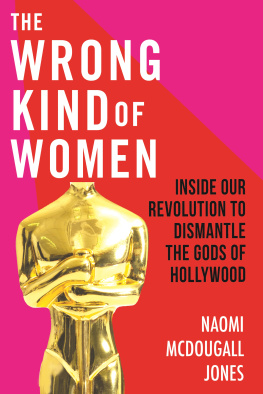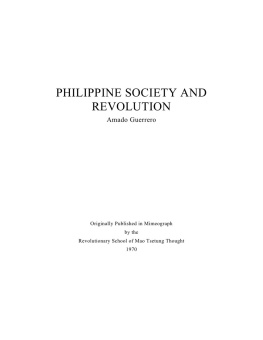First published 1989 by Westview Press, Inc.
Published 2019 by Routledge
52 Vanderbilt Avenue, New York, NY 10017
2 Park Square, Milton Park, Abingdon, Oxon OX14 4RN
Routledge is an imprint of the Taylor & Francis Group, an informa business
Copyright 1989 Taylor & Francis
All rights reserved. No part of this book may be reprinted or reproduced or utilised in any form or by any electronic, mechanical, or other means, now known or hereafter invented, including photocopying and recording, or in any information storage or retrieval system, without permission in writing from the publishers.
Notice:
Product or corporate names may be trademarks or registered trademarks, and are used only for identification and explanation without intent to infringe.
Library of Congress Cataloging-in-Publication Data
Jones, Gregg R.
Red revolution: inside the Philippine guerrilla movement / Gregg
R. Jones.
p. cm.
Bibliography: p.
Includes index.
ISBN 0-8133-0644-2ISBN 0-8133-0877-1 (pbk.)
1. PhilippinesPolitics and government1946 . 2. Insurgency
PhilippinesHistory20th century. 3. CommunismPhilippines
History. 4. GuerrillasPhilippinesHistory20th century.
I. Title.
DS686.5.J64 1989
959.904dc20 89-32833
CIP
ISBN 13: 978-0-367-28528-9 (hbk)
My fascination with an Asian archipelago beset by a burgeoning communist revolution began in 1983, when I was a 24-year-old reporter in Atlanta. I was drawn to Asia almost by accident, by reading In Search of History, Theodore White's account of his youthful reportorial travels through China as the revolution led by Mao Zedong edged toward victory. I started clipping brief wire service articles on the worsening conflict in the Philippines10 soldiers dead in an ambush along some isolated provincial road, 8 New People's Army (NPA) guerrillas killed in a remote jungle encounter elsewhere, and so on. By late 1983, as the Philippines seemed to totter on the brink of cataclysm in the aftermath of Benigno Aquino's assassination, I had decided to witness firsthand a revolution in the making. Late in the sweltering evening of May 3, 1984, I arrived in Manila to begin a career as a free-lance correspondent. For the next five years, I traveled throughout the Philippines, observing and reporting on the various political and social forces shaping and tearing the nation. I witnessed the decline and fall of the Marcos regime and the first three years of Corazn Aquino's rule. In 1987, my interest in the forces of revolution in the Philippines brought me together with a publisher interested in a book on the Communist Party of the Philippines (CPP) and its guerrilla army.
When I began this project, I was unsure how much access I would have to the Communist Party and its political and armed forces in the countryside and the cities. The Party is, after all, an outlawed organization, and the affairs of the revolution have by necessity been shrouded in secrecy. I was told by Party cadres at one point during my research that a lower CPP organ had recommended against cooperating for a book about the revolution written by a foreigner. But high-level Party officials overruled, and I was allowed to proceed. As it turned out, I was surprised and pleased by the extent of the cooperation I received from Party and guerrilla units. By late 1988, I had been given a rare look inside a clandestine revolutionary movement in the midst of, rather than after, its struggle for power.
I have focused this book as narrowly as possible on the revolutionary undergroundthat is, on the activities of the CPP and its guerrilla army. A meaningful examination of the Armed Forces of the Philippines and government responses to the communist-led revolution would require another volume. In order to devote more attention to those aspects of the revolution about which little is known, I have treated more briefly some of those recent historical events in the Philippines (the 1986-1987 cease-fire between Corazon Aquino's government and the guerrillas, for example) that have been exhaustively covered by the international media and by scholars.
The material for this book derives from three principal sources: my interviews and conversations with CPP and NPA leaders, rank-and-file guerrillas and Party members, legal left-wing activists, rebel defectors, and Filipinos living in communist-controlled rural barrios and urban slums; CPP and government documents, both published and unpublished; and my experiences and observations as a reporter covering the Philippines for U.S. and British newspapers between 1984 and 1989, during which time I visited 40 of the country's 73 provinces. I discovered that many early "official" Party documents written for public consumption were embellished, and so I have treated such sources with caution.
I have relied primarily on the interviews I conducted with men and women who had joined the revolution. The overriding value of basing this book to a large extent on hundreds of interviews with the leaders and members of the CPP and communist army, as well as sympathetic peasants and slum dwellers, lies in the vivid personal accounts that have brought the revolution to life in human terms. I have sought to depict the history and development of this revolutionary movement as seen through the eyes of actual participants. This methodology, of course, has inherent strengths and weaknesses. Memories can be selective and self-serving, and therefore I attempted to corroborate information as much as possible with one or more sources. Sometimes, documents or the historical record helped resolve conflicts. In a few instances, I was unable to resolve discrepancies, and so I have offered the conflicting versions of events.
At the outset of every interview, I took pains to explain the nature of my project, so that it would be clear to my sources that they were speaking for publication. In general, I found lower-ranking Party cadres, guerrillas, and peasants to be the most candid sources, sometimes remarkably so, although some ranking CPP officials with whom I developed relationships during the course of months became more forthcoming in our discussions. Scores of interviews were impromptu. Whenever I arrived in a guerrilla camp or in a peasant's house in a communist-controlled barrio, I tried to interview as many people as I could. Since I was always escorted by a Party cadre, I was viewed as an "official," and therefore welcome, guest by most of the combatants, political cadres, and peasants I met in the countryside. I was always on the alert for the possibility that interviewees might be telling me what they thought I wanted to hear or what Party cadres expected them to say. Armed with a reporter's skepticism, I had to judge the credibility and candor of a source. The reader must decide how successful I have been in this endeavor.
I conducted a majority of the interviews during eight forays with NPA and Party units in the countryside during 1987 and 1988; on other reporting trips I spoke with Party cadres and relevant military, political, and private figures in different areas of the country. My trips and interviews inside guerrilla zones were geographically dispersed enough, I believe, to have given me an overview and a sense for the revolution as a national movement. I selected a CPP-controlled barrio in southern Quezon for a case study of life under revolutionary rule, and I was allowed to travel freely through the area, although always escorted by a Party cadre.


